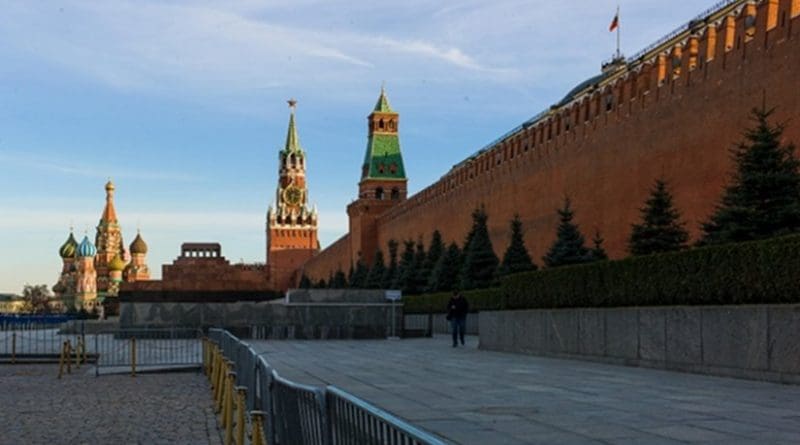NSS 2016: Implications Of Russia’s Absence – Analysis
By IPCS
By Urmi Tat*
The Nuclear Security Summit (NSS) 2016 is the last in a series of four summits held to identify and commit to time-bound agendas on nuclear security concerns. The Washington Summit (2010) focused on securing nuclear material and radiological substances, with the intention of preventing nuclear terrorism, while the Seoul Summit (2012) identified nuclear security with nuclear safety in the wake of the Fukushima nuclear disaster. The Summit also introduced the goal of removing Highly Enriched Uranium (HEU) from civilian operations. The Hague Summit (2014) involved a detailed articulation of the goals set in 2012, such as strengthening nuclear architecture, enhancing the role of the International Atomic Energy Agency (IAEA), ensuring safety of nuclear materials against trafficking and smuggling, among others. With the last edition to the series of Summits scheduled to be held in Washington, DC from 31 March to 1 April 2016, several pressing concerns need to be addressed. However, an official declaration of non-participation by Russia carries several implications for the effectiveness of the upcoming Summit.
What are the outstanding goals of the NSS and how could Russia’s absence impact their implementation?
Outstanding Goals
The chief concerns to be addressed in the Summit stem partly from the shortcomings of the previous conferences and partly from developments in the security environment. The agendas of the previous Summits have been limited to nuclear security, especially towards reducing the use of HEU for military and civilian purposes. However, in practice, countries have barely touched upon sensitive issues such as reduction in the use of HEU for military materials. This is problematic, considering the fact that 83 per cent of weapons-usable HEU and plutonium is in military materials and only 17 per cent in civilian application.
The threat of nuclear terrorism by non-state actors remains crucial to the nuclear security discourse, with an increasing number of terrorist groups showing interest in acquiring nuclear equipment and know-how. Further, recent reports of stolen nuclear material from Iraq have fuelled fears of radioactive material falling into the hands of the Islamic State (IS). The concern of cyber security is also set to be an important spill-over from the previous Summits, with the exploitation of cyber vulnerabilities becoming an all-pervasive security threat. The Trilateral Initiative signed at the 2014 Summit has the potential to keep the momentum of the Summit operating beyond 2016, and involves implementation of major recommendations of the IAEA for nuclear and radiological security. The 2016 Summit needs to take on the initiative of convincing nuclear-armed states like China, Russia, India and Pakistan to join this enterprise.
Russia’s Absence: A Dent to the Summit’s Credibility?
Russia’s absence needs to be evaluated with regard to its diplomatic clout in nuclear security affairs. Since the Cold War, Russia has been an important actor in securing fissile materials and combating the threat of nuclear terrorism. One of Moscow’s greatest contributions in this regard has been the pledge to remove all HEU from Ukraine by 2012. Although Putin’s discontent over the US’ attitude towards the Crimean crisis marked his absence from The Hague Summit, Russia’s participation was instrumental in the advances made there. Thirty five nations agreed to integrate international security guidelines into their national legislations. The combined pressure of US and Russia has been critical in introducing a sense of urgency and commitment to the nuclear security issue. Russia’s non-participation must be seen in the larger context of souring US-Russia relations. With differences in Ukraine and Syria continuing to offset ties, this marks a watershed in their relationship.
In light of the goals to be achieved, the absence of a key international player like Russia would be detrimental to the sanctity of the conference itself. The input of one of the five formally recognised nuclear powers is crucial to the realisation of farsighted goals, and Russia’s absence could mean a number of things as far as their implementation is concerned. Russia’s dispensability of the conference might encourage countries to take the Summit lightly and remain rigid towards compromises. The climate of skepticism is detrimental to the expansion of goals and confrontation of contentious issues that the Summit needs. Russia is estimated to hold the world’s second largest stock of civilian HEU, after the US. Moscow operates over fifty research reactors, pulsed reactors and critical assemblies using HEU, as well as five HEU-fueled icebreakers. Russia’s absence sends a message of its lack of prioritisation of nuclear issues to the global community and sets an uncomfortable precedent for future conferences.
Although non-participation in the Summit does not signal an end to US-Russia collaboration on nuclear security issues and does not rule out useful steps taken by other nations, it could well lead to a break in the momentum initiated by the Summits. The Summit processes were able to engage governments, industry and the academic community and have been important for capacity-building. Russia’s attitude towards the upcoming Summit however, places this sense of immediacy in jeopardy. Nuclear cooperation should not be seen as a bargaining chip, falling to the whims of political sentiments.
* Urmi Tat
Research Intern, IPCS

